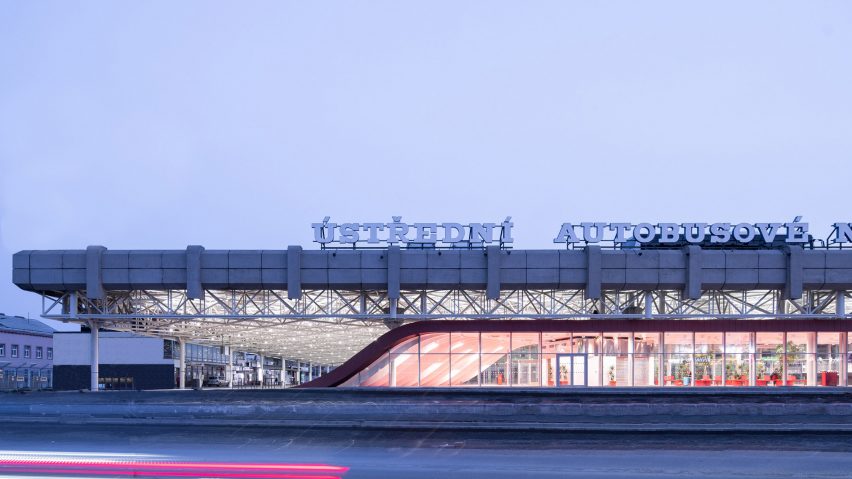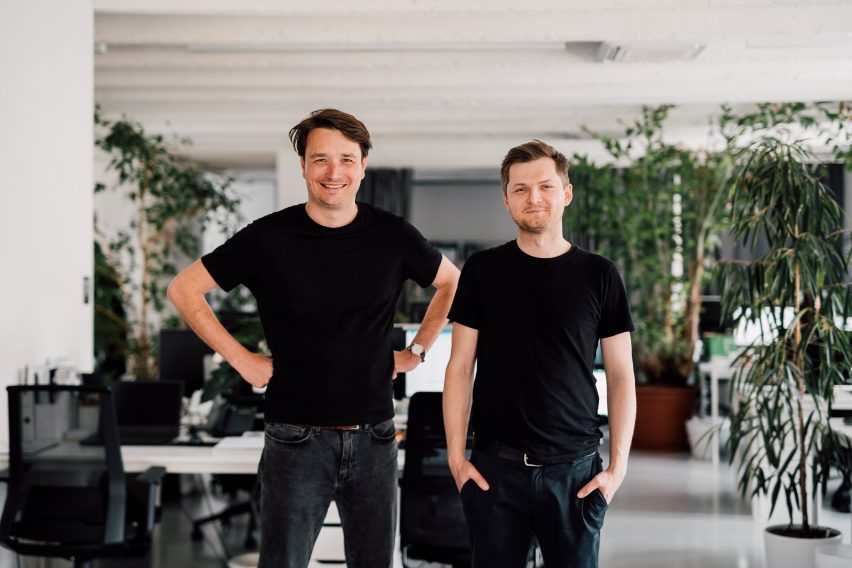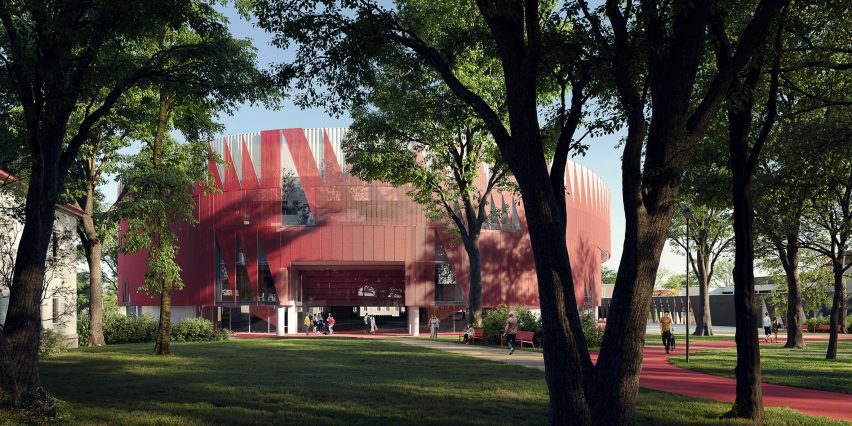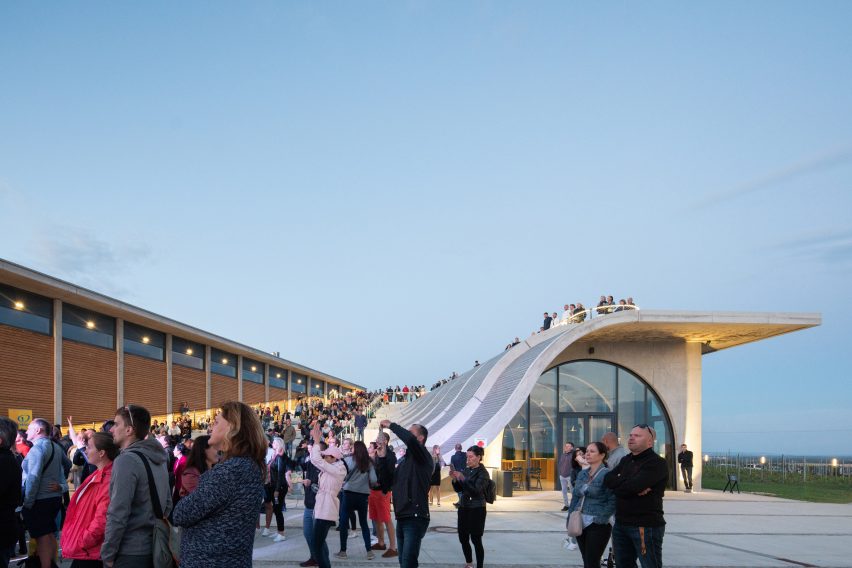
Central Europe "becoming a hotspot for contemporary architecture" says Ondřej Chybík
Architecture studios in Central Europe have been chronically overlooked, claims Chybik + Kristof co-founder Ondřej Chybík in this interview.
Chybík, who says his own studio is the largest in the Czech Republic, is on a mission to put architecture from his home country – as well as Slovakia, Poland and Hungary – firmly on the global design map.
"No-one can name anybody" from Central European architecture scene
"If I go somewhere and I talk about Czech architecture or Central European architecture, almost no-one can name anybody," he told Dezeen.
"I think there is a huge opportunity to show off a bit," he added. "I'd like to work on that for the next decade – not just to promote our studio, but to explain what our generation is about to the general public all around the world."
To that end, Chybik + Kristof will next month open an office in London, sharing a space with local studio Haptic.

That is partly because Chybik + Kristof has become a big fish in a small pond at home, he explains, but also to raise the international profile of its peer group.
"The true motivation was to offer the opinion of our generation to other territories – our right to be a voice in the contemporary architecture discussion," Chybík said.
In an attempt to contribute to that discussion, Chybik + Kristof is accompanying the opening of its London outpost with the launch of its inaugural monograph, titled Crafting Character.
The book spotlights in detail 14 of the studio's projects, organised around eight themes that it considers important to contemporary architecture including adaptive reuse, affordability and materiality.
"The profession is changing"
Chybík explained that the book's central concept picks up on the changing nature of the architecture profession in a world where the built environment is beset with issues, chiefly sustainability and affordability.
"We believe that buildings should have a certain character, but not in one direction," he said.
"Previous generations of architects were very proud of their very strong formal style. I think that's not the case today, because the profession is changing from making design into solving problems – the architectural form should represent the quality of the solution."
As a result, he argues, the idea of studios maintaining a trademark house style that they apply to all projects is losing relevance.
"Each project is different, and I believe that there's no common architectural language for such diverse topics – that's very fundamental."
"I think we should still care about the beauty, about proportions, about materiality, and those classical aspects of architecture," he added.
"But on the other hand, or on top of it, we should also be aware that there are other issues we have to take into consideration."
"We were competing against each other"
Chybík traces his own interest in architecture back to childhood memories of visiting the Faculty of Architecture at Brno University of Technology, where his father was a professor.
"I saw the corridors full of sketches and models, and architecture students smoking in the corridors with long hair, and it impressed me a lot," he recalled. "Since then I knew that I wanted to be an architect."
Later studying architecture at Brno himself, he was successful in landing several student competitions – working up a healthy rivalry with classmate Michal Kristof.
"We were not working together, we were competing against each other," explained Chybík. "It motivated me a lot, because there was some young Slovak guy doing the same competitions as me, and we got a certain monopoly in student competitions within the country."

In 2010, soon after graduating, the pair were talking in a Venice bar during the architecture biennale in the early hours of the morning when they decided to open a studio together.
Having been established later that year, Chybik + Kristof now employs 60 people, including, Chybík claims, more architects than any other Czech firm.
But Chybík says Chybik + Kristof is just one of a number of architecture studios in the region doing noteworthy work.
"Particularly in my country, there's something very interesting happening, because we are not the unicorns," he said.
"We are maybe the largest, but there's lots of like 30-40 people architecture studios – I can count like 10, maybe, 15 this size," he added. "It's becoming a hotspot of contemporary architecture, in my opinion."
Unique historical perspectives
In the Czech Republic, Chybík namechecks Mjölk Architekti, Bod Architekti and OVA, as well as the Center for Architecture and Metropolitan Planning in Prague.
Then there is Gut Gut, Plural and Sadovsky & Architects in Slovakia and Hungary's Archikon and Paradigma Ariadné.
A wave of Czech architecture studios were founded during the 1990s as the country underwent rapid transformation following the fall of the Iron Curtain, appointing themselves the moniker "the Golden Eagles".
Though this generation of architects rose to prominence within the Czech Republic, a language barrier meant they struggled to promote their work abroad, according to Chybík.
"So I'm very happy that my generation is able to communicate and is also willing to present their projects internationally," he said.
"If I open Dezeen today, I can see lots of Czech architecture firms publishing their projects, and many of them are my age."
Now, the region's unusual recent history – from communism to the capitalism of the 1990s – in combination with a significant need for new infrastructure, means Chybík believes it is fertile ground for new modes of architectural exploration.
He points, for instance, to Chybik + Kristof's transformation of a brutalist bus station (pictured top) constructed in the 1980s under communism but already in a dilapidated state due to a lack of investment by its private owner, as well as its project to build an ice-hockey arena in Jihlava.
"There are always tools to achieve a positive perception among users"
Meanwhile, he cites the studio's Lahofer Winery as the very epitome of Chybik + Kristof's "crafting character" concept.
Completed in 2020, it features an undulating roof bearing a publicly accessible amphitheatre that was not part of the brief.
"The amphitheatre is a magnificent tool, not just for the promotion of the brand of the winery, but to bring people together and to let them enjoy a cultural event every Saturday in the middle of vineyards," said Chybík.
"Even though the winery has this very contemporary architectural language and I was afraid about if the community will take it or not, they're always telling me that they experience lots of great moments in this particular place, it's great," he added.
"There are always tools to achieve such a positive perception [among] the users of architecture."

This type of approach, Chybík argues, is key to making the building industry more sustainable – though he resists using that term himself.
"The average age of a commercial building in Europe is around 40 years, and that's something that is extremely unsustainable," he said.
"I think one of the major [reasons] why we demolish those buildings is that they are lacking a character, and they are not flexible enough for future transformation."
"Our mission is to create buildings people like and will maintain," he added.
"I don't want to say sustainable – I hate this word, it's overused. I don't want to be another architect talking about sustainability. Every building we design should be designed in this way."
The photography is by Alex shoots buildings unless otherwise stated.
Dezeen In Depth
If you enjoy reading Dezeen's interviews, opinions and features, subscribe to Dezeen In Depth. Sent on the last Friday of each month, this newsletter provides a single place to read about the design and architecture stories behind the headlines.